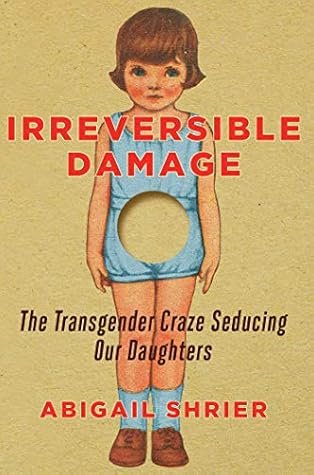More on this book
Community
Kindle Notes & Highlights
Between 2016 and 2017 the number of gender surgeries for natal females in the U.S. quadrupled, with biological women suddenly accounting for—as we have seen—70 percent of all gender surgeries.1 In 2018, the UK reported a 4,400 percent rise over the previous decade in teenage girls seeking gender treatments.2 In Canada, Sweden, Finland, and the UK, clinicians and gender therapists began reporting a sudden and dramatic shift in the demographics of those presenting with gender dysphoria—from predominately preschool-aged boys to predominately adolescent girls.3
Why would a psychological ailment that had been almost exclusively the province of boys suddenly befall teenage girls? And why would the incidence of gender dysphoria be so much higher in friend clusters?
the clear majority (65 percent) of the adolescent girls who had discovered transgender identity in adolescence—“out of the blue”5—had done so after a period of prolonged social media immersion. Second, the prevalence of transgender identification within some of the girls’ friend groups was more than seventy times the expected rate.
Activists stormed the Twitter page of PLoS One, the peer-reviewed scientific journal of the Public Library of Science that had published Dr. Littman’s paper, accusing her of anti-trans bigotry. They claimed that Dr. Littman had deliberately solicited parent reports from conservative, anti-trans parent groups. (In fact, over 85 percent of the parents self-identified as supporting LGBT rights.)
the surveyed parents had not expressed anti-transgender attitudes generally, but rather had expressed disbelief and upset that their daughters had adopted this identity “out of the blue” without any childhood history of gender dysphoria—and that following this identification, their adolescents’ mental health seemed to get worse.
Dr. Littman’s paper became one of the most widely discussed academic articles of 2018.17 Her analysis and conclusions drew praise from some of the most distinguished world experts on gender dysphoria.18 Dozens of parents wrote to her to thank her for giving name to the phenomenon they were observing in their adolescents. But she was also widely tarred as a bigot and a bully. This, despite the fact that she had neither the security of tenure nor a faculty coauthor for cover.19 She wasn’t right-wing or anti-trans. She had spent several years working part-time for Planned Parenthood and, with her
...more
physician consultant on projects related to the health of pregnant women and preterm infants. Her work there had nothing to do with transgender youth; it had nothing to do with young children or adolescents per se at all. Her interest in preemies stemmed from her years of training in obstetrics. Caring for preemies had been a passion of hers ever since she had given birth to a preemie of her own, just over one pound at birth. The activists denounced Littman to her employer, the DOH, claiming that she had written a paper “harmful” to transgender youth. They demanded that the DOH “terminate its
...more
Has “activist” become a euphemism for “bully”? They certainly don’t seem to support academic freedom, free inquiry, or the 1st Amendment


